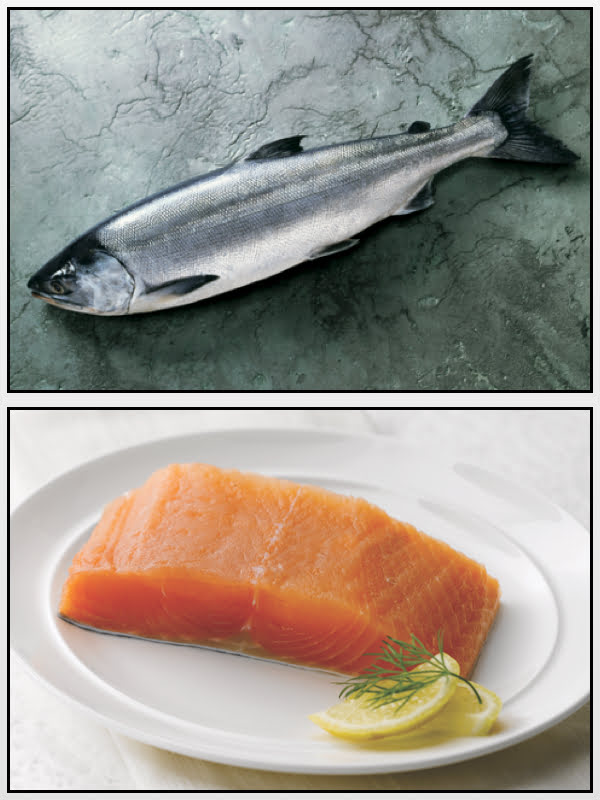Keta Salmon has an intermediate size between that of the Coho Salmon and the Sockeye Salmon.
- Average weight: 3.6 Kg.
- Commercial weight range: 1 – 5.5 Kg.
- It measures 60-70 cm long. The females are usually smaller than the males.
- Alaska Zone: Southeast Alaska to the Arctic Ocean
- Fishing methods: Gillnet, seine
- Quantity: Of the annual catch of salmon in Alaska, the keta variety represents 15.3% in units and 17.6% by weight.
Keta Salmon combines a firm texture and fine flavor at a moderate price. Keta Salmon’s meat only contains 4-5% fat, and its color shows more variation than that of the other species. This translates into a very competitive price, approximately the same as for farmed salmon, and offers exceptional value for the cook who appreciates intrinsic quality over appearances.
Keta Salmon it is perfect for tartars, marinades, and minimal cooking methods which seal in its juices. Also, Keta Salmon produces the largest and most appreciated salmon roe (ikura in Japanese) on the market.
Keta Salmon is usually classified into three categories: bright, semi-bright and dark – referring to the color of the skin, not the meat. Certain differences in tonality can also be attributed to the geographical area where the salmon was caught. Shiny Keta is metallic greenish-blue in color, quite dark; this shade turns silver on the sides and belly in the fishing season. May have fine, pale stripes. The semi-gloss Keta has darker stripes on the sides and the skin and loin are less lustrous. Dark Keta features well-defined dark stripes on the sides that have turned a deep red hue. In the male, the stripes are vertical and can extend from the belly to the back, while in the female, there is a single broad horizontal stripe that runs from the operculum to the tail.






